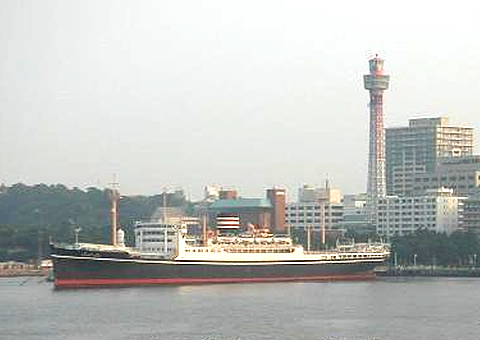by Martin Frid on 20 July 2008 in www.Treehugger.com
Before air travel, how on earth did people get around the globe? For a brief moment in history, there were steam ships and then diesel ferries. Now, due to high fuel costs, such ferries may no longer be a solution to your travel needs.
Arimura Industries, which has operated passenger ferries between Japan and Taiwan, ceased operations this year. The company operated under bankruptcy protection for some time and tried to work a rehabilitation plan, but was turned down, according to Japan Update.
If you visit Yokohama, the port city just south of Tokyo, I recommend the Hikawa Maru (11,622 gt) in Yamashita Park. The Hikawa Maru was the main passenger ship between Japan and Seattle and San Francisco in the United States before WW2, called the "Queen of the Pacific". Many celebrities who visited Japan in those days came here on the Hikawa Maru, including Helen Keller and Charlie Chaplin. It was a slow, wonderful journey accross the Pacific Ocean, probably
a lot more interesting than today's 12 hour jumbo jet flights.
When oil was at its cheapest, Japanese ferry lines started expanding overseas. In 1970, the Ferry Kampu began to ply between Shimonoseki (Japan) and Pusan (South Korea). This ship was the first international ferry between Japan and other countries after WW2.
Tsuyoshi Ishiyama, a writer who knows a lot about Japanese ferries, notes:
But oil prices rose very high because of the Oil Crises of 1973, and what was worse, tourists decreased. The high coast and depression hit ferry companies which operated the so-called luxury car ferries. In 1976, the Kagoshima-based Kagoshima Shosen made planes for a luxury ferry between Kagoshima (Kyushu) and Kobe (Honshu), but failed to be realized. Luxury ships disappeared from Japanese waters one by one, and such ferries as freighters replaced them. For example, the
Shin Nihonkai Ferry's New Suzuran (16,250gt, 1979) and New Yukari (16,239gt, 1979); the Hankyu Ferry's New Yamato (11,919gt, 1983), New Miyako (11,914gt, 1984), etc. were such ferries as freighters.
It makes me a little sad to note that sea ferries are no longer seen as a sustainable solution to overseas travel. But as oil prices remain high, which is more attractive as a long-term business idea: sea ferries or jumbo jets?
This unique ship helped Jewish refugees escape Nazi Germany via Japan. Later, the ship avoided disaster because it was used as a hospital ship. Something jumbo jets would have a difficult time to do, in times of sustained difficulties.

image above:First Class Cabin of the Hikawa Maru. The ship is a museum to 20th century travel
|

